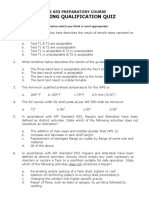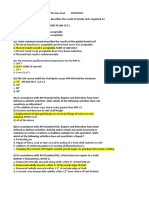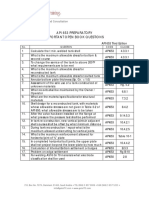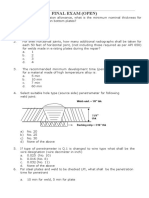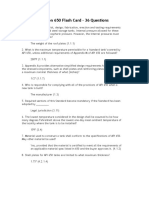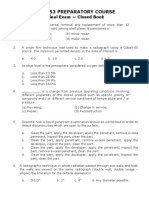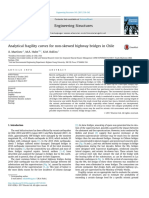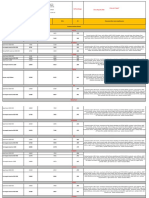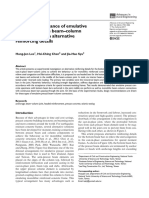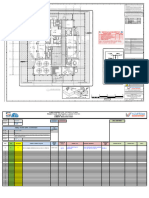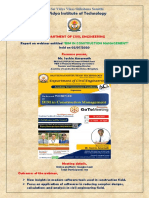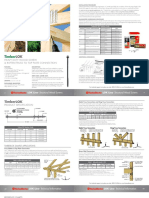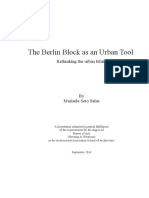0% found this document useful (0 votes)
23 views8 pagesAPI 653 - Study Guide - 67 Questions
The document is a study guide for API 653, covering essential questions and answers related to the standard for in-service storage tanks. It includes topics such as tank construction standards, inspection requirements, corrosion rates, repair definitions, and responsibilities of owners and inspectors. The guide serves as a comprehensive resource for understanding the key principles and practices outlined in API 653.
Uploaded by
Khalid AbdohCopyright
© © All Rights Reserved
We take content rights seriously. If you suspect this is your content, claim it here.
Available Formats
Download as PDF, TXT or read online on Scribd
0% found this document useful (0 votes)
23 views8 pagesAPI 653 - Study Guide - 67 Questions
The document is a study guide for API 653, covering essential questions and answers related to the standard for in-service storage tanks. It includes topics such as tank construction standards, inspection requirements, corrosion rates, repair definitions, and responsibilities of owners and inspectors. The guide serves as a comprehensive resource for understanding the key principles and practices outlined in API 653.
Uploaded by
Khalid AbdohCopyright
© © All Rights Reserved
We take content rights seriously. If you suspect this is your content, claim it here.
Available Formats
Download as PDF, TXT or read online on Scribd
/ 8



